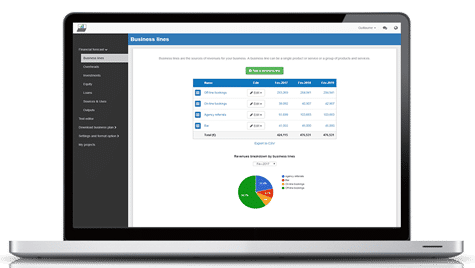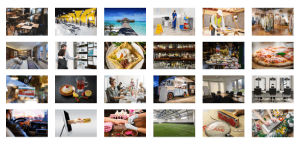How to create a financial forecast for a gin bar?
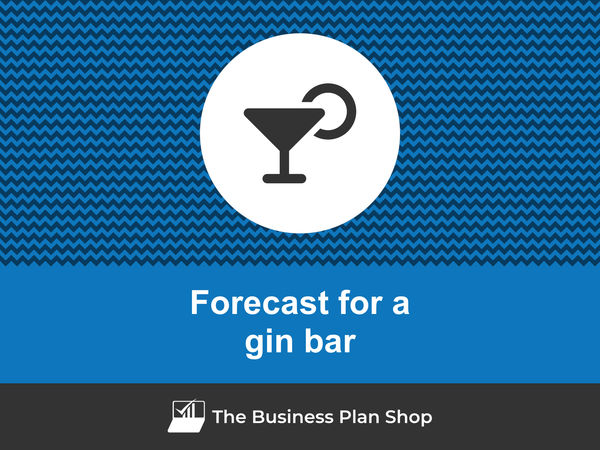
Developing and maintaining an up-to-date financial forecast for your gin bar is key in order to maintain visibility on your business’s future cash flows.
If you feel overwhelmed at the thought of putting together a gin bar financial forecast then don’t worry as this guide is here to help you.
We'll cover everything from: the main objectives of a financial forecast, the data you need to gather before starting, to the tables that compose it, and the tools that will help you create and maintain your forecast efficiently.
Let's get started!
Why create and maintain a financial forecast for a gin bar?
Creating and maintaining an up-to-date financial forecast is the only way to steer the development of your gin bar and ensure that it can be financially viable in the years to come.
A financial plan for a gin bar enables you to look at your business in detail - from income to operating costs and investments - to evaluate its expected profitability and future cash flows.
This gives you the visibility needed to plan future investments and expansion with confidence.
And, when your trading environment gets tougher, having an up to date gin bar forecast enables you to detect potential upcoming financing shortfalls in advance, enabling you to make adjustments or secure financing before you run out of cash.
It’s also important to remember that your gin bar's financial forecast will be essential when looking for financing. You can be 100% certain that banks and investors will ask to see your numbers, so make sure they’re set out accurately and attractively.
Need a solid financial forecast?
The Business Plan Shop does the maths for you. Simply enter your revenues, costs and investments. Click save and our online tool builds a three-way forecast for you instantly.
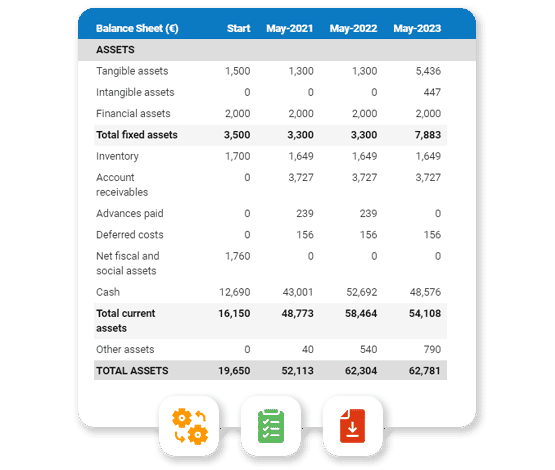
What information is used as input to build a gin bar financial forecast?
A gin bar's financial forecast needs to be built on the right foundation: your assumptions.
The data required to create your assumptions will depend on whether you are a new or existing gin bar.
If you are creating (or updating) the forecast of an existing gin bar, then your main inputs will be historical accounting data and operating metrics, and your team’s view on what to expect for the next three to five years.
If you are building financial projections for a new gin bar startup, you will need to rely on market research to form your go-to-market strategy and derive your sales forecast.
For a new venture, you will also need an itemised list of resources needed for the gin bar to operate, along with a list of equipment required to launch the venture (more on that below).
Now that you understand what is needed, let’s have a look at what elements will make up your gin bar's financial forecast.
The sales forecast for a gin bar
The sales forecast, also called topline projection, is normally where you will start when building your gin bar financial forecast.
Creating a coherent sales projection boils down to estimating two key drivers:
- The average price
- The number of monthly transactions
To do this, you will need to rely on historical data (for an existing business), market research data (for both new and existing gin bars), and consider the elements below:
- Rising demand for premium gin: As more consumers become interested in the craft gin market, the demand for premium gin will likely increase. This may allow you to raise the average price of your gin, resulting in higher sales revenue per transaction.
- Seasonal fluctuations in tourist traffic: If your gin bar is located in a popular tourist destination, you may experience fluctuations in the number of monthly transactions depending on the time of year. For example, peak tourist season may bring in more customers, while the off-season may result in fewer transactions.
- Partnerships with local distilleries: By partnering with local distilleries, you may be able to offer unique and exclusive gin varieties that can command a higher price. This can help increase your average price per transaction and potentially attract more customers looking for a unique experience.
- Availability of outdoor seating: During warmer months, customers may be more inclined to visit your gin bar if you have outdoor seating available. This can increase the number of monthly transactions and potentially allow you to charge a premium for the outdoor experience.
- Trends in cocktail culture: As the popularity of gin-based cocktails continues to rise, you may see an increase in the number of customers ordering cocktails at your bar. This can help drive up your average price per transaction and increase overall sales revenue.
After the sales forecast comes the operating expenses budget, which we will now look into in more detail.
Need inspiration for your business plan?
The Business Plan Shop has dozens of business plan templates that you can use to get a clear idea of what a complete business plan looks like.
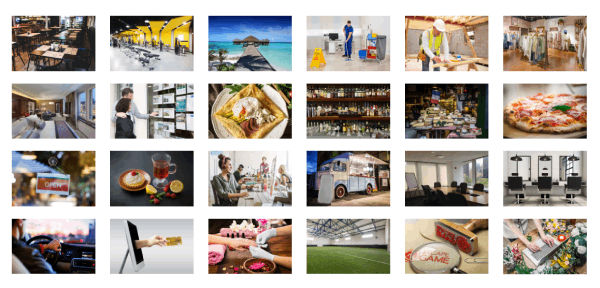
The operating expenses for a gin bar
The next step is to estimate the expenses needed to run your gin bar on a day-to-day basis.
These will vary based on the level of sales expected, and the location and size of your business.
But your gin bar's operating expenses should include the following items at a minimum:
- Staff Costs: This includes wages, salaries, and benefits for your bar staff, such as bartenders, servers, and kitchen staff.
- Accountancy Fees: You may need to hire an accountant to help you manage your finances and taxes.
- Insurance Costs: It is important to have insurance coverage for your gin bar to protect against potential risks and liabilities, such as property damage or lawsuits.
- Software Licenses: You may need to purchase software licenses to manage your bar inventory, sales, and finances.
- Banking Fees: This includes fees for transactions, account maintenance, and other banking services.
- Rent: You will need to pay rent for your bar space.
- Utilities: This includes electricity, water, and gas bills for your bar.
- Inventory: You will need to purchase and maintain a supply of gin, mixers, garnishes, and other ingredients for your drinks.
- Marketing and Advertising: It is important to promote your gin bar to attract customers, so you may need to budget for marketing and advertising costs.
- Equipment Maintenance: Your bar equipment, such as glassware, shakers, and ice machines, will need regular maintenance and repairs.
- Cleaning Supplies: You will need to purchase cleaning supplies to keep your bar clean and sanitary.
- Liquor License: You will need to obtain a liquor license to legally sell alcohol at your gin bar.
- Training and Development: It is important to invest in training and development for your staff to ensure they have the necessary skills and knowledge to provide excellent service.
- Music and Entertainment: You may want to have live music or other forms of entertainment at your gin bar, which may incur additional costs.
- Taxes: You will need to pay various taxes, such as sales tax and payroll tax, as a business owner.
This list is, of course, not exhaustive, and you'll have to adapt it according to your precise business model and size. A small gin bar might not have the same level of expenditure as a larger one, for example.
What investments are needed to start or grow a gin bar?
Creating and expanding a gin bar also requires investments which you need to factor into your financial forecast.
Capital expenditures and initial working capital items for a gin bar could include elements such as:
- Gin Still: This is a crucial piece of equipment for any gin bar as it is used to distill and create the gin. It is a fixed asset that will last for many years and is a significant investment for your bar.
- Glassware and Barware: As a gin bar, you will need to have a variety of glasses and barware for serving different types of gin drinks. This includes martini glasses, highball glasses, cocktail shakers, and strainers. These items are essential for your bar and will need to be replaced periodically.
- Furniture and Decor: The atmosphere and ambiance of your gin bar are crucial for creating a unique and inviting experience for your customers. This may include purchasing tables, chairs, bar stools, lighting fixtures, and other decorative elements to create a cozy and sophisticated atmosphere.
- Point of Sale System: A modern and efficient point of sale (POS) system is essential for any bar, including a gin bar. This system will allow you to track sales, manage inventory, and process payments, making it an essential investment for your business.
- Refrigeration Equipment: Gin is best served chilled, so you will need to invest in refrigeration equipment to keep your gin and other ingredients at the optimal temperature. This may include purchasing a refrigerator, freezer, and ice machine.
Again, this list is not exhaustive and will need to be adjusted according to the circumstances of your gin bar.
Need a convincing business plan?
The Business Plan Shop makes it easy to create a financial forecast to assess the potential profitability of your projects, and write a business plan that’ll wow investors.
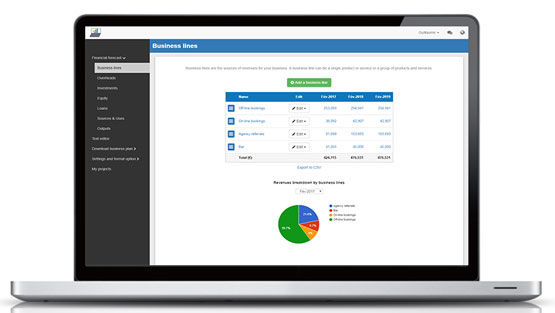
The financing plan of your gin bar
The next step in the creation of your financial forecast for your gin bar is to think about how you might finance your business.
You will have to assess how much capital will come from shareholders (equity) and how much can be secured through banks.
Bank loans will have to be modelled so that you can separate the interest expenses from the repayments of principal, and include all this data in your forecast.
Issuing share capital and obtaining a bank loan are two of the most common ways that entrepreneurs finance their businesses.
What tables compose the financial plan for a gin bar?
Now let's have a look at the main output tables of your gin bar's financial forecast.
The forecasted profit & loss statement
The profit & loss forecast gives you a clear picture of your business’ expected growth over the first three to five years, and whether it’s likely to be profitable or not.
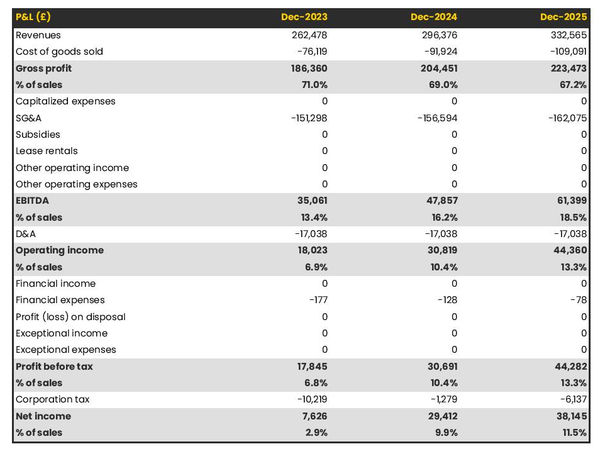
A healthy gin bar's P&L statement should show:
- Sales growing at (minimum) or above (better) inflation
- Stable (minimum) or expanding (better) profit margins
- A healthy level of net profitability
This will of course depend on the stage of your business: numbers for an established gin bar will look different than for a startup.
The projected balance sheet
The projected balance sheet gives an overview of your gin bar's financial structure at the end of the financial year.
It is composed of three categories of items: assets, liabilities and equity:
- Assets: are what the business possesses and uses to produce cash flows. It includes resources such as cash, buildings, equipment, and accounts receivable (money owed by clients).
- Liabilities: are the debts of your gin bar. They include accounts payable (money owed to suppliers), taxes due and bank loans.
- Equity: is the combination of what has been invested by the business owners and the cumulative profits to date (which are called retained earnings). Equity is a proxy for the value of the owner's stake in the business.
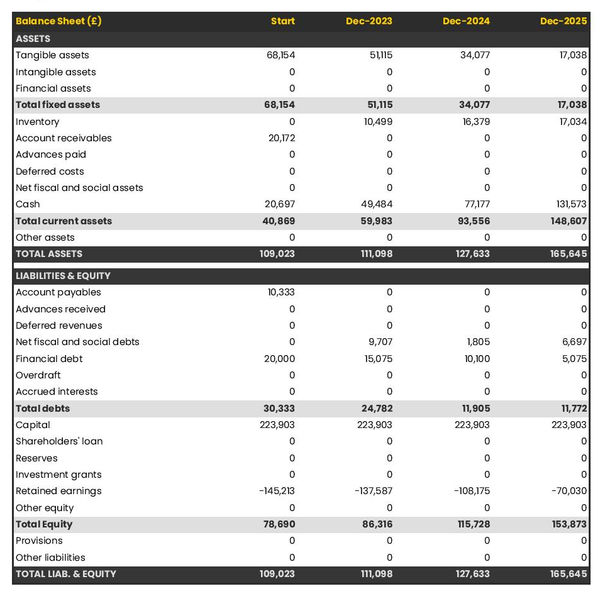
The projected cash flow statement
A projected cash flow statement for a gin bar is used to show how much cash the business is generating or consuming.
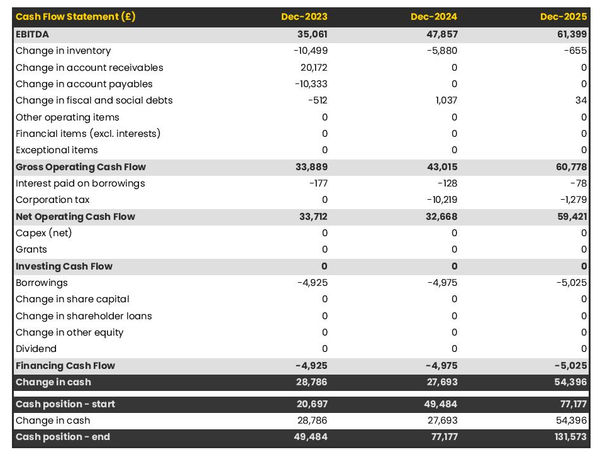
The cash flow forecast is usually organised by nature to show three key metrics:
- The operating cash flow: do the core business activities generate or consume cash?
- The investing cash flow: how much is the business investing in long-term assets (this is usually compared to the level of fixed assets on the balance sheet to assess whether the business is regularly maintaining and renewing its equipment)?
- The financing cash flow: is the business raising new financing or repaying financiers (debt repayment, dividends)?
Cash is king and keeping an eye on future cash flows is imperative for running a successful business. Therefore, you should pay close attention to your gin bar's cash flow forecast.
If you are trying to secure financing, note that it is customary to provide both yearly and monthly cash flow forecasts in a financial plan - so that the reader can analyze seasonal variation and ensure the gin bar is appropriately capitalised.
Need a solid financial forecast?
The Business Plan Shop does the maths for you. Simply enter your revenues, costs and investments. Click save and our online tool builds a three-way forecast for you instantly.

Which tool should you use to create your gin bar's financial forecast?
Creating your gin bar's financial forecast may sound fairly daunting, but the good news is that there are several ways to go about it.
Using online financial forecasting software to build your gin bar's projections
The modern and easiest way is to use an online financial forecasting tool such as the one we offer at The Business Plan Shop.
There are several advantages to using specialised software:
- You can easily create your financial forecast by letting the software take care of the financial calculations for you without errors
- You have access to complete financial forecast templates
- You get a complete financial forecast ready to be sent to your bank or investors
- You can easily track your actual financial performance against your financial forecast, and recalibrate your forecast as the year goes by
- You can create scenarios to stress test your forecast's main assumptions
- You can easily update your forecast as time goes by to maintain visibility on future cash flows
- You have a friendly support team on standby to assist you when you are stuck
- It’s cost-efficient and much cheaper than using an accountant or consultant (see below)
If you are interested in this type of solution, you can try our projection software for free by signing up here.
Calling in a financial consultant or chartered accountant
Outsourcing the creation of your gin bar financial forecast is another possible solution.
This will cost more than using software as you can expect as your price will have to cover the accountant’s time, software cost, and profit margin.
Price can vary greatly based on the complexity of your business. For a small business, from experience, a simple three-year financial forecast (including a balance sheet, income statement, and cash flow statement) will start at around £700 or $1,000.
Bear in mind that this is for forecasts produced at a single point in time, updating or tracking your forecast against actuals will cost extra.
If you decide to outsource your forecasting:
- Make sure the professional has direct experience in your industry and is able to challenge your assumptions constructively.
- Steer away from consultants using sectorial ratios to build their client’s financial forecasts (these projections are worthless for a small business).
Why not use a spreadsheet such as Excel or Google Sheets to build your gin bar's financial forecast?
You and your financial partners need numbers you can trust. Unless you have studied finance or accounting, creating a trustworthy and error-free gin bar financial forecast on a spreadsheet is likely to prove challenging.
Financial modelling is very technical by nature and requires a solid grasp of accounting principles to be done without errors. This means that using spreadsheet software like Excel or Google Sheets to create accurate financial forecasts is out of reach for most business owners.
Creating forecasts in Excel is also inefficient nowadays:
- Software has advanced to the point where forecasting can be done much faster and more accurately than manually on a spreadsheet.
- With artificial intelligence, the software is capable of detecting mistakes and helping decision-making.
Spreadsheets are versatile tools but they are not tailor-made for reporting. Importing your gin bar's accounting data in Excel to track actual vs. forecast is incredibly manual and tedious (and so is keeping forecasts up to date). It is much faster to use dedicated financial planning tools like The Business Plan Shop which are built specially for this.
Need a convincing business plan?
The Business Plan Shop makes it easy to create a financial forecast to assess the potential profitability of your projects, and write a business plan that’ll wow investors.

Use our financial forecast templates for inspiration
The Business Plan Shop has dozens of financial forecast examples available.
Our templates contain both a financial forecast and a written business plan which presents, in detail, the company, the team, the strategy, and the medium-term objectives.
Our templates are a great source of inspiration, whether you just want to see what a complete business plan looks like, or are looking for concrete examples of how you should model financial elements in your own forecast.
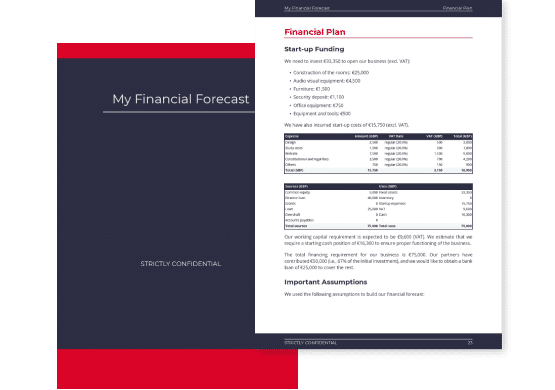
Takeaways
- A financial projection shows expected growth, profitability, and cash generation for your business over the next three to five years.
- Tracking actuals vs. forecast and keeping your financial forecast up-to-date is the only way to maintain visibility on future cash flows.
- Using financial forecasting software makes it easy to create and maintain up-to-date projections for your gin bar.
You have reached the end of our guide. We hope you now have a better understanding of how to create a financial forecast for a gin bar. Don't hesitate to contact our team if you have any questions or want to share your experience building forecasts!
Need inspiration for your business plan?
The Business Plan Shop has dozens of business plan templates that you can use to get a clear idea of what a complete business plan looks like.

Also on The Business Plan Shop
Know someone who runs or wants to start a gin bar? Share our financial projection guide with them!

